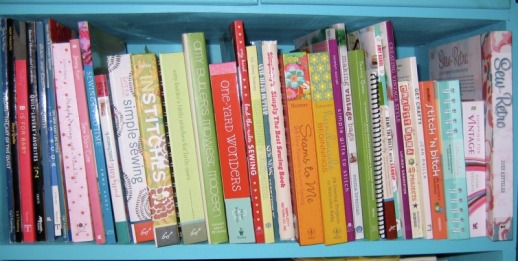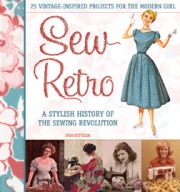Using an Agent
Before we even get to the tips, I wanted to address the process of working with an agent. Not all authors use agents—you certainly don’t have to. But for me, using an agent was a no-brainer. I knew that I didn’t know the book industry well enough to negotiate smartly. I also didn’t know who was who, and which publishers/acquisitions agents I should target (and I didn’t want to spend the time intensely researching it). I also wanted feedback on my proposal. Plus, my agent and I just clicked, and she really believed in the project (I can’t stress enough how important this is). So why do authors sometimes go it alone? Money. The agent takes 15 percent of the advance and royalties (you don’t pay them directly; checks come to the agency on your behalf and the agency takes their cut and then re-cuts the remainder of the check for you). But I found it a smart trade-off and it made good business sense to me. Plus, once you develop a strong working relationship with them, agents can be great at finding work for you.
Strong Ideas
So, back to the process of selling your craft book idea! That’s actually the first point to make: you need a CLEAR IDEA and a clear sense of what your projects will be, and that should be spelled out in the proposal. “The projects always have to be of quality, and should be interesting and new,” Tutela says. Don’t bother completing every single project in the proposal stage; instead, pour your energies into creating a strong showing of selected ones, which could be either one completed chapter or a sampling of projects across the different chapters. (Tune into the next installment for tips on how to present your projects to publishers in the proposal stage.) Your proposal also needs to show how your idea is a good fit in the current market, and have a strong “why now?” component—such as a new approach to an old craft, a different twist on techniques, or a growing niche demographic. Some books, like Sew Retro, have a strong narrative component. But all craft books don’t need this. Tutela says there is still plenty of space for straight project books—it just depends on the publisher and what they’re looking for (which is why it’s handy to have an agent who knows how publishers like to fill out their book lists).
Strong Platform
Tutela stresses that one of the main things an author needs is a pre-existing audience, whether through a well-read blog (20,000 to 30,000 unique visitors a month will likely impress a publisher), through speaking engagements, through a brick and mortar destination store, or through a strong Etsy shop. “They need something that puts them in front of potential consumers of craft products—something that shows that when the book comes out, they’ll have the opportunity to be heard,” she says. This is often the most challenging part of selling a book—not only do you need the idea, but you need to show that you’ll be able to sell books. In my case, it wasn’t that I had a blog or a shop at the time; rather, I think it was that I had good connections at craft/shelter publications and web sites, and that I was consistently publishing articles about crafts/DIY/ and decorating—and I shaped that into a platform.
Writing Matters
Even though craft books are visual in nature, the writing still matters—a lot. “You need clear instructions and good writing. If you can’t deconstruct what you do, find a good technical writer who can,” Tutela advises. She says that there is nothing wrong with positioning yourself as the “idea” person, and then bringing in different people with different expertise for other areas (like design or technical work). Just make sure that you are transparent and upfront.
Think Digital
Print isn’t dying, but digital is booming, and print can’t ignore it. Embrace digital in all its applicable forms, Tutela says: videos, multimedia slide shows, podcasts, blogs, etc. If you’re not comfortable with digital, educate yourself and get comfortable, because it’s not going away. “Recently, I have addeda new requirement: a section all about digital play, where the author talks about things like how-to videos or other digital applications. It’s all about how consumers can interact with the community that’s reading the book and how can they have a value-added experience through digital enhancement,” Tutela says.
Embrace the Crafting Community
The crafting world truly is a community: book authors support and reference each other constantly. That’s somewhat unique to the craft book world. Get familiar with who is who, (humbly) find your place in the community, and always be generous. “The best craft books are seeking to inspire the reader to get the techniques by doing the craft in the book. But it’s really only a launching board for the reader to figure out their own artistic position,” she says. Think of your craft book as part of a larger discussion and experience—not as the be-all and end-all of everything.
Realistic Expectations
Lastly, keep it real. Writing craft books won’t make you rich. It doesn’t have to bankrupt you either, of course. But keep your expectations about advances realistic, Tutela says. “You really need to understand the costs of things like photography. It’s a huge investment for publishers, and they tend to be fairly modest in supporting these books today,” she says. “I don’t think anyone should set out to write a craft book to make a lot of money; it has to be part of an overall strategy about where they want to be in the craft marketplace, whether it’s lecturing/teaching, or having a business/studio that relates to their book.”
So there you go: some advice to get you started on your craft book proposal journey. In the second part of this series, I’ll bring you tips from the acquisitions editor I worked with at Voyageur, as well as some links to more information about writing and selling craft book proposals.



 RSS Feed
RSS Feed